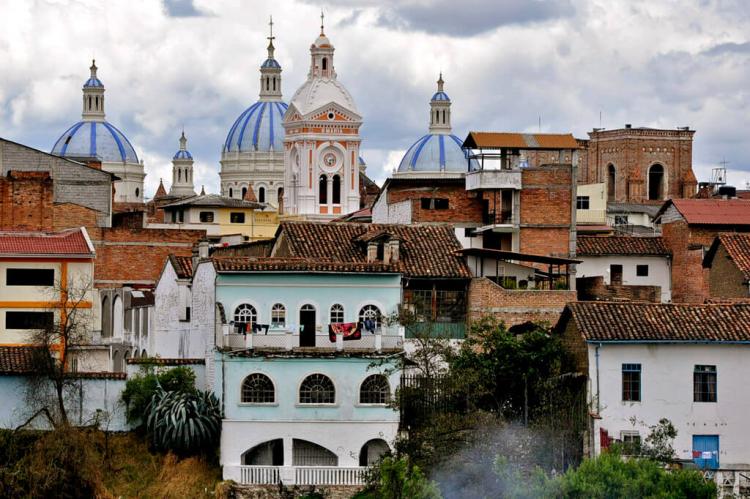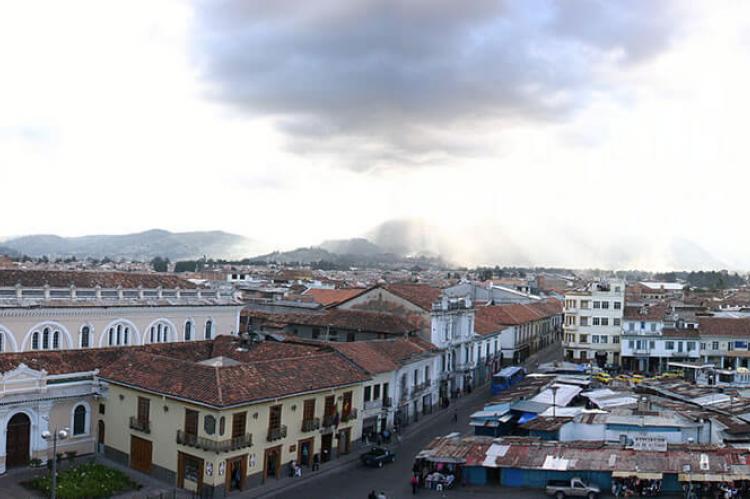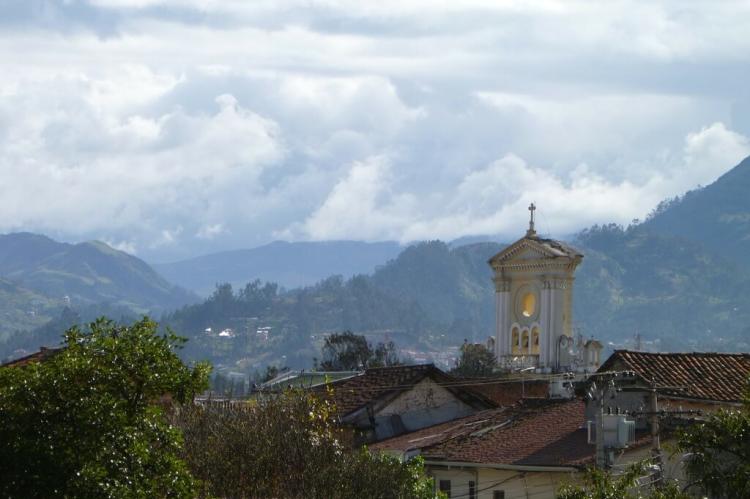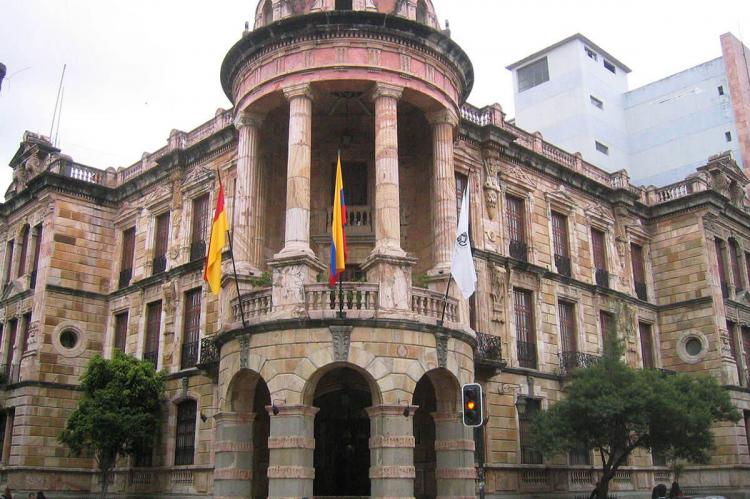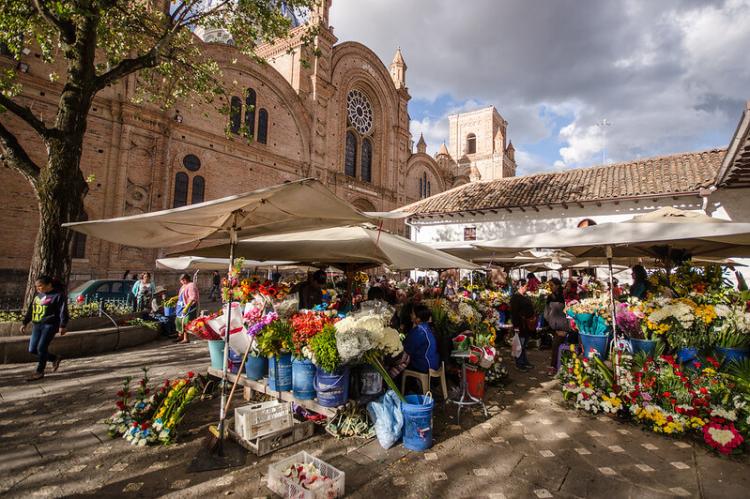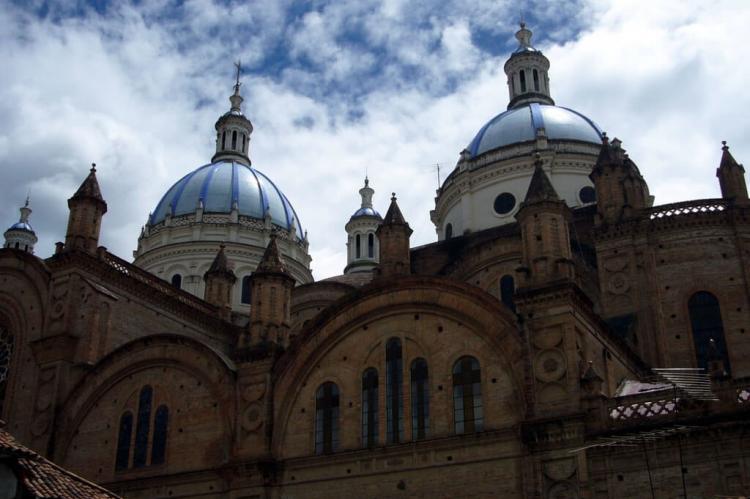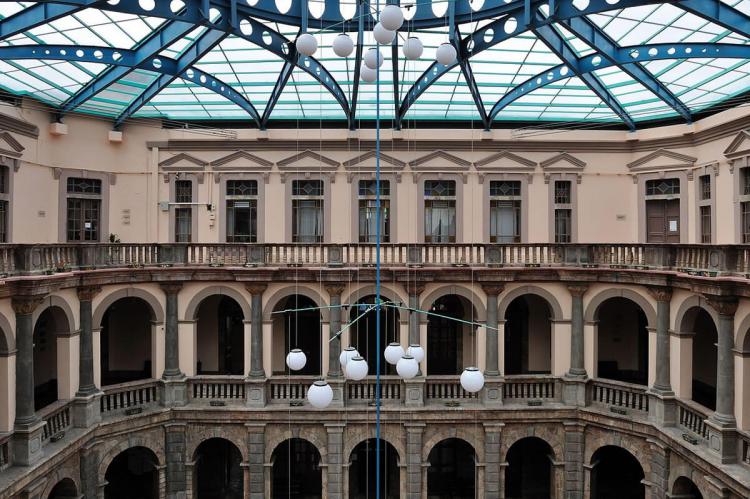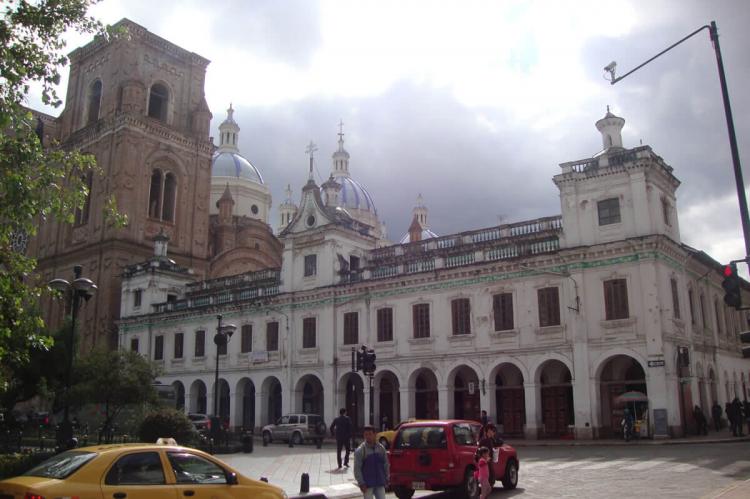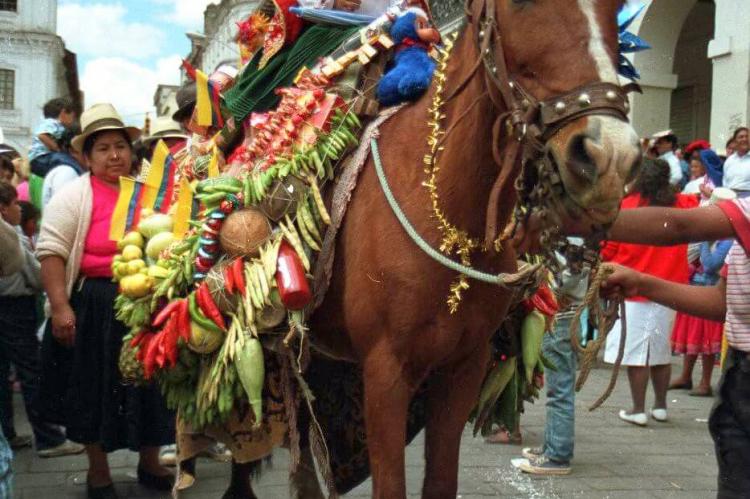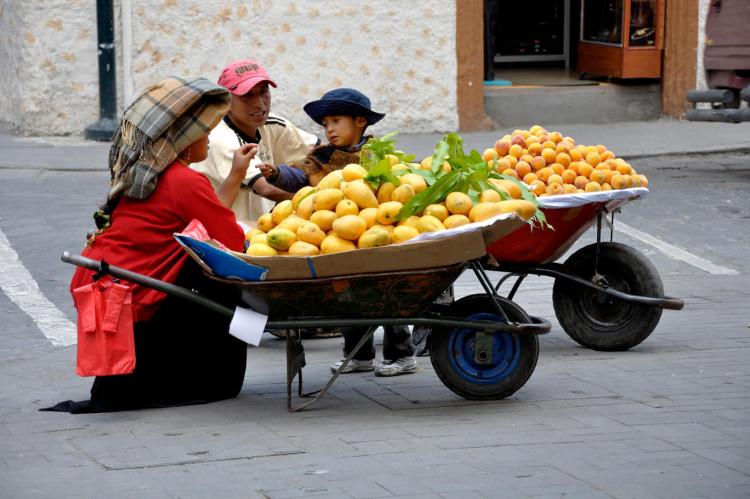Exploring Cuenca: Ecuador's Cultural Gem in the Andean Highlands
Cuenca is a culturally rich city in Ecuador's southern highlands. It is the capital of Azuay Province, surrounded by the Andes Mountains and irrigated by four rivers: Tomebamba, Yanuncay, Tarqui, and Machangara. Cuenca's identity has been shaped by its deep connection with nature over centuries.
Exploring Cuenca: Ecuador's Cultural Gem in the Andean Highlands
Nestled amidst the picturesque southern highlands of Ecuador lies Santa Ana de los Ríos de Cuenca, more commonly known as Cuenca. This city is renowned for its cultural richness and historical significance. As the capital and largest city of the Azuay Province, Cuenca is a testament to the enduring legacy of Ecuador's Andean heritage.
With its elevated perch at approximately 2,560 meters (8,400 feet) above sea level, Cuenca is embraced by the majestic Ecuadorian Andes. It is cradled within a valley irrigated by four rivers: Tomebamba, Yanuncay, Tarqui, and Machangara. This geographical setting has fostered a profound connection between the city and its natural environment, shaping its identity over centuries.
Modern Urban Landscape
Cuenca's modern urban landscape is a testament to its evolution as a thriving metropolis. Reflecting a dynamic blend of economic development and cultural richness, the city has undergone significant transformation. As the third-largest city in Ecuador, Cuenca stands as a beacon of progress and prosperity, attracting locals and visitors alike with its vibrant energy and cosmopolitan charm.
The city's urban fabric is a tapestry woven with threads of contemporary architecture, commercial districts, and cultural hubs. Modern skyscrapers rise alongside historic landmarks, juxtaposing old and new that define Cuenca's skyline. From sleek office buildings to trendy shopping centers, the city's commercial sector pulsates with activity, serving as a hub of economic vitality and innovation.
Residential areas in Cuenca offer diverse housing options, catering to the needs and preferences of its inhabitants. From quaint colonial-style homes in the historic center to modern condominiums in burgeoning neighborhoods, the city's housing market reflects its dynamic population and growing urban sprawl.
Commercial hubs buzz with activity, offering many shopping, dining, and entertainment options for residents and visitors alike. From bustling markets selling fresh produce and local crafts to upscale boutiques and international restaurants, Cuenca's commercial landscape is as diverse as its people.
Recreational spaces dotted throughout the city provide residents with opportunities for relaxation and leisure. Parks, plazas, and green spaces offer respite from the hustle and bustle of urban life, serving as gathering spots for picnics, concerts, and cultural events. The city's commitment to preserving and enhancing its recreational amenities underscores its dedication to quality of life for its residents.
Natural Beauty and Ecological Diversity
Cuenca's allure extends far beyond the confines of its urban core, beckoning adventurers and nature enthusiasts to explore the breathtaking natural beauty that envelops the city. Nestled in a valley nourished by the life-giving waters of four rivers – the Tomebamba, Yanuncay, Tarqui, and Machangara – Cuenca is blessed with a stunning backdrop of the majestic Andes Mountains. The Tomebamba River, with its gentle flow through the city's heart, adds to the picturesque charm, offering residents and visitors a serene escape from the urban hustle.
The ecological diversity surrounding Cuenca is remarkable, showcasing an array of ecosystems and landscapes that capture the imagination. From lush green valleys to rugged Andean highlands, the region's natural beauty captivates with its diversity and splendor. Cuenca's proximity to several national parks and protected areas further enhances its appeal as a haven for outdoor enthusiasts.
One such gem is Cajas National Park, located just west of the city. Renowned for its pristine lakes, páramo ecosystems, and rugged terrain, the park offers a natural retreat for those seeking solitude and adventure. Hikers can traverse a network of trails that wind through the park's pristine wilderness, offering breathtaking vistas of snow-capped peaks, crystal-clear lakes, and rolling hillsides. Birdwatchers will delight in spotting various avian species, including Andean condors, hummingbirds, and elusive páramo birds.
Beyond Cajas National Park, Cuenca is a gateway to outdoor activities and eco-tourism adventures. The surrounding Andean highlands offer endless hiking, mountain biking, and horseback riding opportunities, allowing visitors to immerse themselves in the region's natural splendor. For those seeking a more leisurely experience, scenic drives through the countryside reveal charming villages, cascading waterfalls, and pastoral landscapes belonging to another time.
Historic Center of Cuenca
Nestled within the heart of Cuenca lies its historic district, a UNESCO World Heritage Site that serves as a living testament to the city's rich history and cultural legacy. Known as the Historic Centre of Santa Ana de los Ríos de Cuenca, this enchanting quarter is steeped in centuries-old tradition and architectural splendor, offering visitors a glimpse into the city's colonial past and indigenous roots.
The historic center of Cuenca is a veritable treasure trove of well-preserved colonial architecture and cultural landmarks, each telling a story of the city's evolution over time. Narrow cobblestone streets, lined with centuries-old buildings adorned with wrought-iron balconies and colorful facades, transport visitors back to the days of Spanish colonialism. The architecture is a testament to the city's strategic role as a center for trade and culture during the colonial era, reflecting a harmonious blend of European and indigenous influences.
One of the most iconic features of Cuenca's historic center is its collection of colonial churches, each a masterpiece of architectural grandeur and religious significance. From the imposing façade of the Cathedral of the Immaculate Conception to the Baroque splendor of the Church of Santo Domingo, these sacred sites stand as symbols of faith and devotion, drawing pilgrims and tourists from far and wide.
Vibrant plazas and bustling markets dot the historic center, serving as gathering places for locals and visitors alike. These communal spaces, such as the picturesque Park Calderón and the lively Plaza de las Flores, are not only hubs of activity but also focal points of cultural expression and celebration. From colorful festivals and traditional music performances to artisanal markets and culinary delights, the historic center pulsates with the rhythm of daily life, offering a glimpse into the soul of Cuenca.
As visitors meander through the labyrinthine streets of the historic center, they'll encounter a wealth of hidden gems waiting to be discovered. Museums, galleries, and artisan workshops showcase the city's artistic heritage and creative spirit. At the same time, historic homes and mansions offer a glimpse into the lives of Cuenca's elite during the colonial period. Every corner of the historic center is steeped in history and culture, inviting visitors to embark on a journey of discovery and enlightenment.
Architecture
Cuenca's architectural landscape is a veritable feast for the eyes. It boasts a remarkable collection of colonial-era structures that witness the city's storied past and cultural heritage. From its historic center's cobblestone streets to its sacred landmarks' grand facades, every corner of Cuenca is adorned with architectural treasures that reflect the city's rich history and diverse influences.
One of the most striking features of Cuenca's architecture is its meticulous attention to detail, evident in the intricate wrought-iron balconies, wooden doors adorned with religious motifs, and ornate facades that adorn its historic buildings. These architectural elements serve as a testament to the craftsmanship and artistry of the city's colonial artisans, who imbued each structure with a sense of beauty and reverence.
At the heart of Cuenca's architectural ensemble stands the Cathedral of the Immaculate Conception, a towering masterpiece that exemplifies the city's architectural prowess. Constructed over several centuries, the cathedral showcases a harmonious blend of Gothic, Romanesque, and Baroque influences, resulting in a breathtaking synthesis of architectural styles. Its soaring spires, intricate carvings, and majestic domes serve as a beacon of faith and a symbol of Cuenca's enduring legacy.
Beyond the cathedral, Cuenca has a wealth of architectural gems spanning centuries. From the imposing facades of colonial-era mansions to the quaint charm of traditional adobe homes, the city's architectural landscape is a testament to its multicultural heritage and diverse influences. Visitors can wander through the cobblestone streets of the historic center, marveling at the rich tapestry of architectural styles that adorn its buildings, each bearing witness to the city's evolution over time.
Landmarks
Cuenca's historic center is a testament to the city's rich cultural heritage. It is dotted with various religious and civic landmarks, contributing to its vibrant tapestry. Each landmark has a unique story, reflecting the city's evolution and enduring legacy over the centuries.
The Cathedral of the Immaculate Conception, affectionately known as Cuenca Cathedral, reigns supreme as the city's largest and most iconic church. Its majestic presence dominates the skyline, with impressive domes and spires that soar towards the heavens. Within its hallowed halls, visitors are greeted by a sanctuary of serenity, adorned with intricate carvings, ornate altars, and stunning stained glass windows that bath the interior in a kaleidoscope of color. As the focal point of the historic district, the cathedral stands as a symbol of faith and a testament to Cuenca's enduring spiritual heritage.
The Church of Santo Domingo, dating back to the 16th century, is another architectural gem that graces Cuenca's historic center. Its striking Baroque facade captivates with its intricate detailing and ornate embellishments, showcasing the skill and craftsmanship of its colonial-era builders. Inside, the church houses an impressive collection of religious art, including exquisite paintings, sculptures, and altarpieces that offer a glimpse into the city's rich artistic heritage.
Nestled within the tranquil confines of San Francisco Plaza lies the San Francisco Church and Convent, a serene oasis amidst the bustling streets of the historic center. Surrounded by lush gardens and adorned with timeless sculptures, the plaza offers a peaceful respite for visitors seeking solace and reflection. With its simple yet elegant facade, the church exudes an air of tranquility, inviting visitors to explore its sacred interior and marvel at its architectural splendor.
Public Spaces
Cuenca's historic center is a testament to the city's rich architectural heritage and a vibrant hub of communal life. It boasts an array of public spaces that serve as gathering spots for locals and visitors alike. From lively plazas to serene parks, these communal areas are pivotal in enhancing the district's aesthetic appeal and fostering community among its inhabitants.
At the heart of the historic center lies Parque Calderón, a central square named in honor of Ecuador's first president. This bustling plaza is a focal point for civic life, surrounded by some of the district's most iconic landmarks. Adorned with meticulously manicured gardens, elegant fountains, and graceful statues, Parque Calderón exudes an air of grandeur and elegance, inviting visitors to linger and soak in the atmosphere. At its center stands a monument dedicated to Simón Bolívar, the revered liberator whose legacy looms large over the city's history.
Another beloved public space in Cuenca's historic center is Parque de las Flores, a picturesque park renowned for its vibrant flower market and cultural festivities. Nestled amidst a riot of colors and fragrances, this charming park is a feast for the senses, offering visitors the chance to browse through a dazzling array of blooms and botanical delights. The park hosts various cultural events and festivities throughout the year, from traditional music performances to artisanal markets, drawing crowds of locals and tourists alike.
In addition to these iconic public spaces, Cuenca's historic center is dotted with many plazas, parks, and promenades that offer respite from the hustle and bustle of urban life. Whether it's the tranquil beauty of Parque San Blas, the majestic splendor of Plaza San Sebastián, or the leafy tranquility of Parque de la Madre, each space has its unique charm and allure, beckoning visitors to linger and savor the simple pleasures of communal living.
Cultural Institutions
Cuenca's historic center is a treasure trove of architectural wonders and a vibrant cultural institution hub celebrating the city's rich history and artistic heritage. From contemporary art galleries to archaeological museums, these cultural institutions offer visitors a fascinating glimpse into Cuenca's past, present, and future.
One such institution is the Museum of Modern Art, a beacon of creativity and innovation within the historic district. Showcasing a diverse collection of contemporary Ecuadorian and international artworks, the museum offers visitors a window into the vibrant world of modern art. From thought-provoking installations to striking paintings and sculptures, the museum's exhibits span various styles and mediums, reflecting the dynamic nature of the contemporary art scene in Cuenca and beyond.
For those interested in delving deeper into the city's pre-Columbian history, the Pumapungo Museum and Archaeological Park comprehensively explores the region's indigenous heritage. Situated amidst lush green gardens and ancient ruins, the museum features archaeological exhibits and reconstructed indigenous dwellings that provide insight into Cuenca's ancestral inhabitants' daily lives and customs. From intricately crafted ceramics to ceremonial artifacts and tools, the museum's exhibits offer a fascinating glimpse into the rich tapestry of indigenous culture that has shaped the region for millennia.
In addition to these cultural institutions, Cuenca's historic center is home to various galleries, theaters, and cultural centers celebrating the city's artistic and intellectual heritage. From intimate galleries showcasing local talent to grand theaters hosting world-class performances, these cultural spaces serve as vibrant hubs of creativity and expression, enriching the lives of residents and visitors alike.
Preservation Efforts
Preservation efforts within the UNESCO-listed historic center of Cuenca stand as a testament to the city's commitment to safeguarding its architectural and cultural heritage for future generations. Through strict regulations and community initiatives, Cuenca has succeeded in preserving the authenticity of its colonial architecture while fostering a vibrant and living historic district.
The strict regulations that govern new construction and restoration projects within the historic center ensure that any changes to the architectural landscape are carried out with sensitivity and respect for the district's cultural significance. Every aspect of new construction, from building materials to design elements, must adhere to strict guidelines to preserve the integrity of the colonial architecture that defines the district's character. These measures not only protect the physical fabric of the historic center but also safeguard the intangible cultural heritage that imbues the district with its unique identity and charm.
Beyond preservation, Cuenca's historic center remains a vibrant and dynamic hub of activity, where residents and visitors can engage with the city's cultural practices and traditions. Local markets brim with the sights, sounds, and smells of daily life, offering a glimpse into the culinary delights and artisanal craftsmanship that have sustained the community for generations. Traditional artisan workshops dot the streets, where skilled craftsmen and women practice age-old techniques passed down through the ages, creating exquisite pottery, textiles, and other handmade goods that are a testament to the city's rich artistic heritage.
Cultural events and festivals further enrich the atmosphere of the historic center, filling its streets with music, dance, and celebration throughout the year. From religious processions and folkloric performances to art exhibitions and theatrical productions, these events provide opportunities for residents and visitors to unite and celebrate the cultural diversity that defines Cuenca's identity.
Conclusion
In conclusion, Cuenca is a true gem among Ecuador's cultural treasures. It weaves together a rich tapestry of history, architecture, and natural beauty that captivates the hearts and minds of all who visit. From its bustling modern urban landscape to its meticulously preserved historic center, the city offers a journey through time that celebrates the depth and diversity of Ecuador's cultural heritage.
Cuenca's allure lies not only in its architectural splendor and scenic vistas but also in the vibrant spirit of its people, whose warmth and hospitality welcome visitors with open arms. Whether wandering through the cobblestone streets of the historic center or exploring the lush landscapes surrounding the city, one cannot help but be enchanted by the timeless charm and landmark significance permeating every corner of Cuenca.
As the city continues to evolve and grow, its commitment to preservation remains steadfast, ensuring that future generations can appreciate and enjoy its timeless beauty for years. By embracing both the past and the present, Cuenca serves as a living testament to Ecuador's rich cultural heritage, inspiring all who encounter it to cherish and protect the treasures of our shared history.
